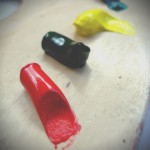Kinds Of Soil
Minerals from the origins of soil are still found in abundance depending on the kinds of soil. Formation of soil begins when climatic factors like heat and rain affect the rock materials on the earth’s surface. With the degradation of these materials over time, soil can form. In essence, soil is the loose covering of particles comprising small rocks and fine dirt.
While there are many kinds of soil around, for most of us, soil is the material that we use to grow our food. Soil is made up of layers that vary in texture and consistency. Some soil types are great for planting, while others are good for building structures. Some soil types are the components of non-arable land, and are therefore used for other things besides planting.
Not all kinds of soil contain the necessary organic material that plants need to survive. Some soil types are too rocky or too loose to properly nourish life. The best kinds of soil for planting are those that are compact enough for supporting roots, and loose enough for water to penetrate.
Alfisols – These kinds of soil with an abundance of aluminium and iron. The soil horizons are distinct and one can see various levels with clay accumulation. Sufficient moisture and temperature in these kinds of soil can encourage the growth of crops.
Aridisols – These kinds of soils comprise arid land. These are very dry soils that form when the heat from the sun saps all moisture from the land, such as in desert conditions. While it may be possible to grow crops on this soil with sufficient irrigation, there is a limitation on what kinds of crops can grow on it. New soil production is very slow, as there isn’t enough organic matter to mix with the existing soil.
Andisols – These kinds of soils are abundant in regions where volcanic activity was recorded several times in the last century. These soils are fertile and a great variety of crops can grow on them. Many of these soil types can be seen in tropical areas.
Entisols – These kinds of soils are known as young soil because they have been recently formed from rocks and sediments. The main characteristics of these kinds of soil include the absence of soil layers and low amount of organic matter. Entisols can be synonymous with inceptisols but these two kinds of soil may have different textures and mineral components.
Gelisols – These soils are unique in that there is a layer that is permanently gel-like in texture. This layer is characterized by freezing temperature which rarely changes even with the changing of the seasons. This permafrost layer is located around two to three meters below the soil surface. This is the kind of soil most prevalent in polar regions.
Histosols – These are organic soils usually found in marshlands. These are muddy in texture on the surface, but can be firm and compact in deeper layers. As can be expected, these soils contain a high quantity of organic material, making them ideal for farming.






